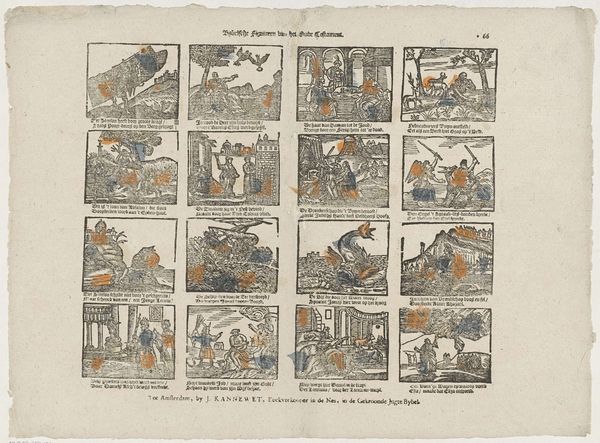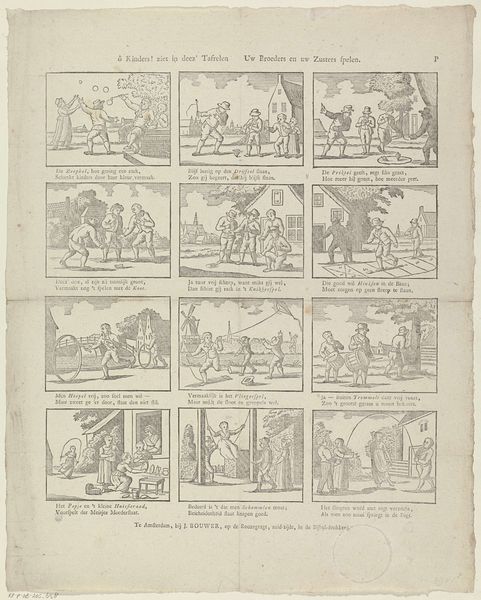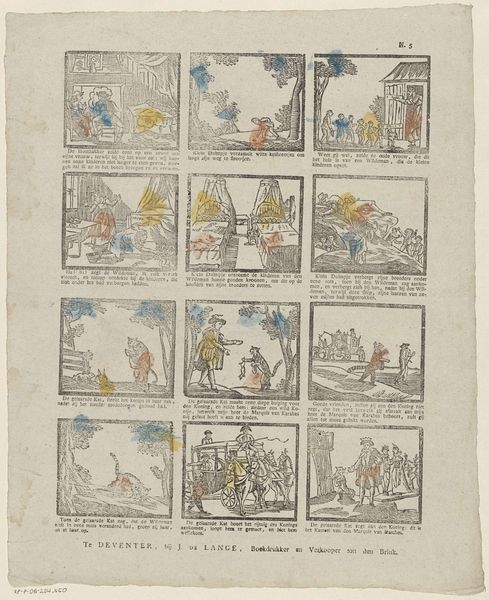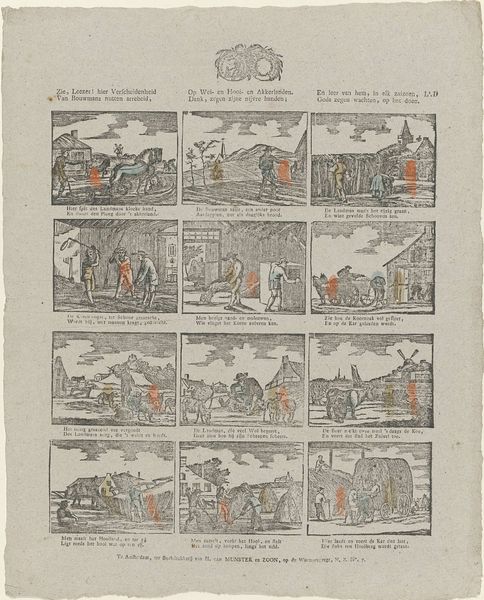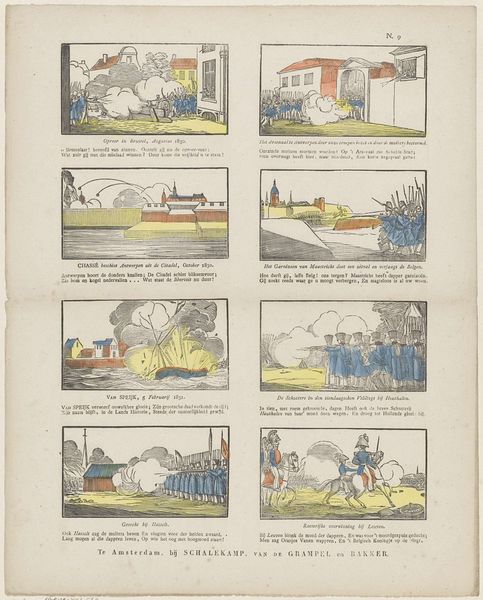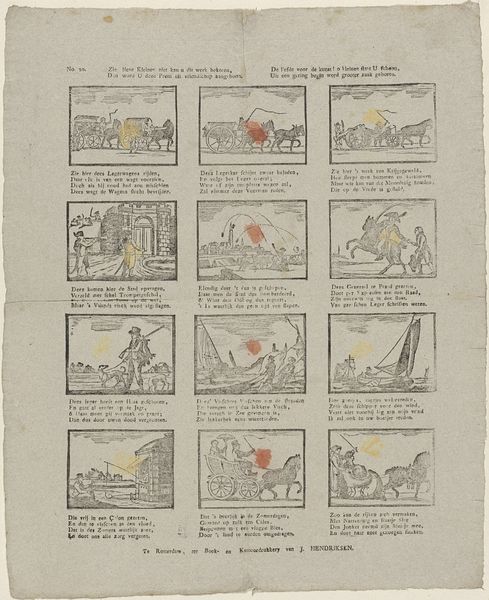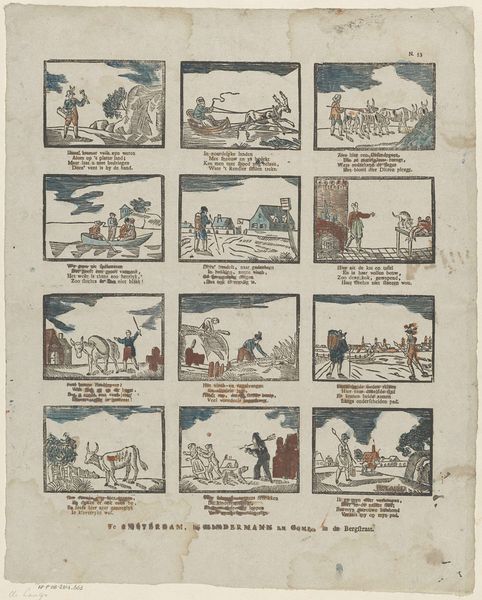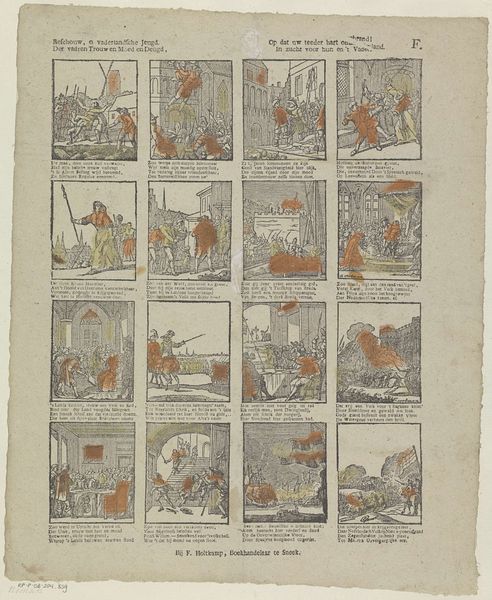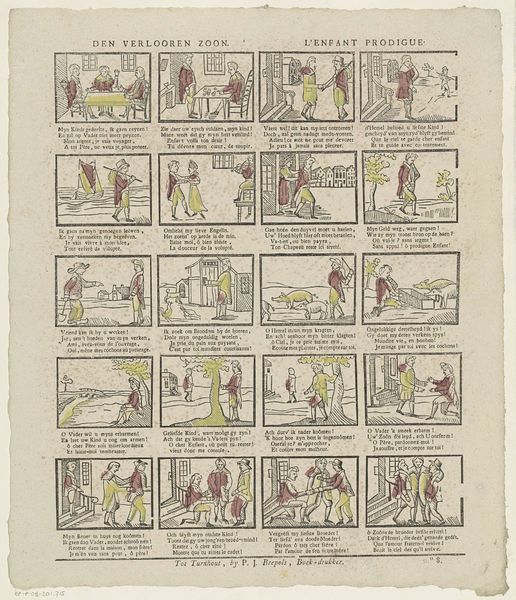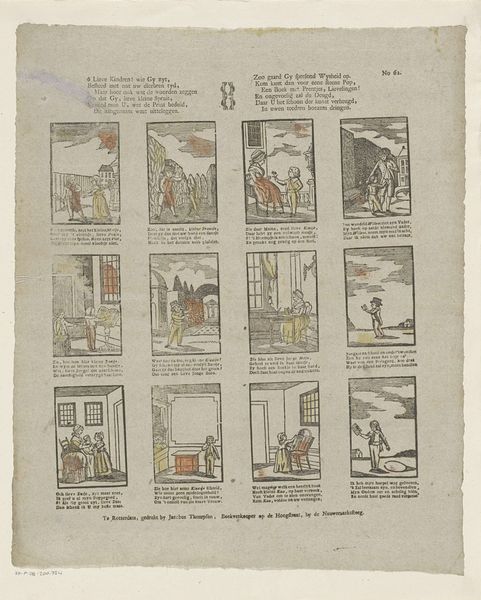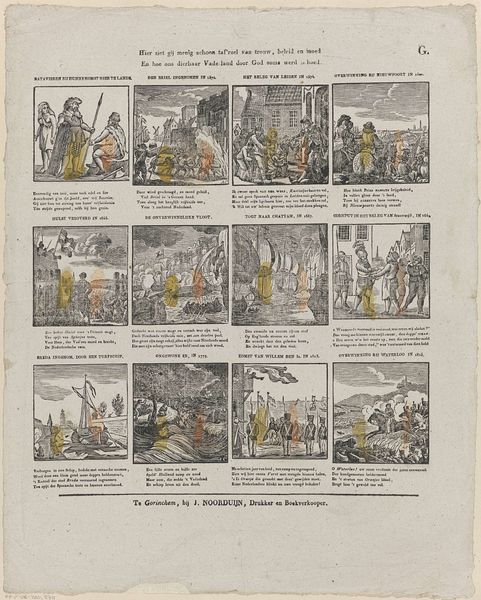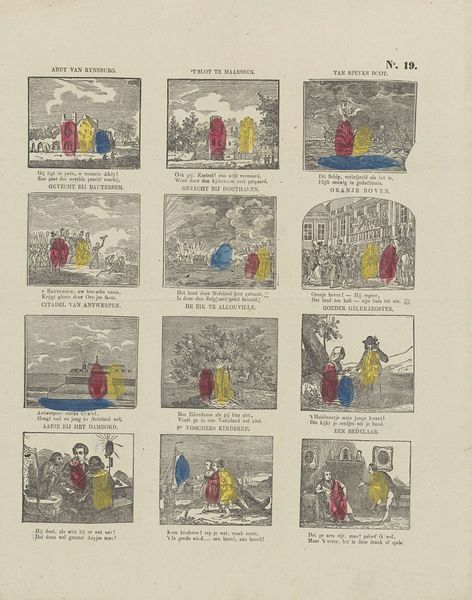
Zie hier, ô lieve jeugd! des werelds eerste stand, / Waarin de boosheid reeds vertoont de overhand 1842 - 1866
0:00
0:00
graphic-art, print, engraving
#
graphic-art
#
narrative-art
# print
#
genre-painting
#
engraving
Dimensions: height 321 mm, width 399 mm
Copyright: Rijks Museum: Open Domain
Curator: Editor: We’re looking at a printed work called “Zie hier, ô lieve jeugd! des werelds eerste stand, / Waarin de boosheid reeds vertoont de overhand,” made sometime between 1842 and 1866 by weduwe C. Kok-van Kolm, currently held at the Rijksmuseum. The piece presents, what, fifteen different little scenes? Each seems to depict a different moment, almost like panels in a graphic novel. I’m immediately drawn to the narrative aspect of it all. What story do you think it’s telling, or perhaps more accurately, alluding to? Curator: Well, aren't we the little storytellers ourselves today! The print shows different moments from the Book of Genesis - Adam and Eve, Cain and Abel... it's fascinating to consider the intent. Kok-van Kolm seems to be taking these grand biblical narratives and breaking them down into bite-sized chunks for mass consumption, perhaps as moral instruction. I wonder, does the compartmentalization change the inherent drama for you? Editor: That's a clever observation. When the scenes are presented together on one page like this, their individual intensity sort of… diffuses. Instead of feeling the weight of each individual moment, you get this overarching sense of humanity's continuous struggle with good and evil. Do you think the relatively simplistic style contributes to the piece’s accessibility, too? Curator: Absolutely! The straightforward imagery bypasses high art's perceived gatekeepers and gets straight to the heart of the story. Makes me ponder… isn't art at its most potent when it manages to be both accessible and deeply layered? Like a well-told joke! Editor: So it seems accessibility wasn't a dumbing down, but a choice in how best to approach the subject. I hadn't considered how radical that could be. Curator: Right? It really makes you think about who gets to tell the stories, and for whom.
Comments
No comments
Be the first to comment and join the conversation on the ultimate creative platform.
